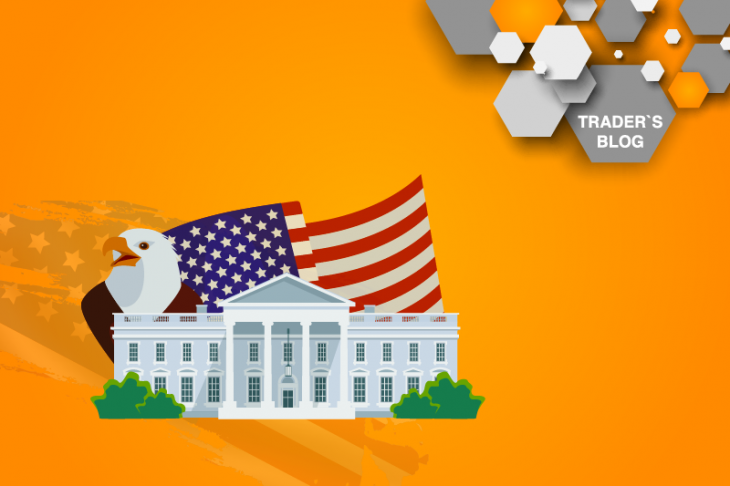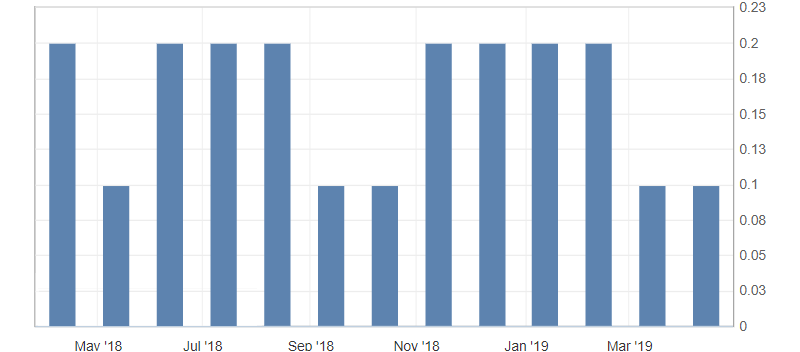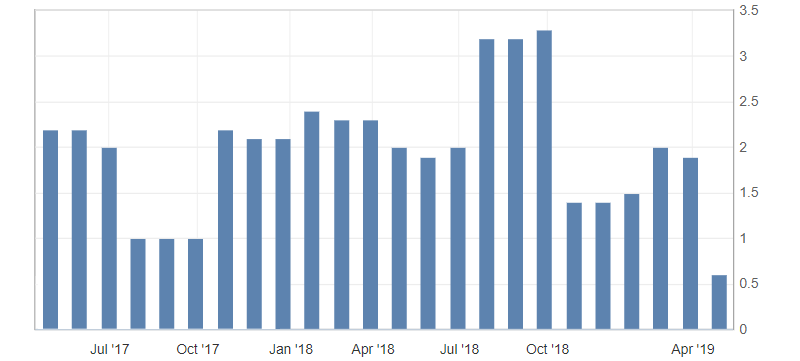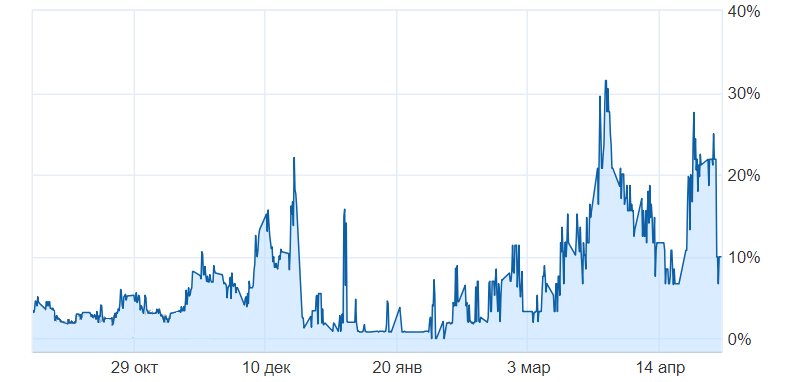
What is interesting about the US Fed meeting in April, and how it can affect the world banks policy?
Expectations from the April Fed meeting
From the April Fed meeting, the United States expected a moderately negative economic situation due to the slowdown in inflation. The slowdown in US inflation in the first quarter was the main negative factor that put a significant pressure on the US dollar before the publication of the US Federal Reserve protocol.
The reason for such negative expectations for inflation in the United States has become statistics. Thus, core consumer price index (CPI) in the US (m/m) for the second consecutive month showed a slowdown, which was the first alarming bell.

Fig. 1. U.S. core consumer price index (CPI) chart (m/m)
The actual negative signal of a slowdown in inflation in the United States passed preliminary data on the US GDP deflator for the first quarter, which came out a week before the results of the Fed meeting were published and became the actual reason for the dollar sale on expectations that the Fed would signal lower rates on low inflation.

Fig. 2. U.S. GDP deflator chart (Q)
The quarterly GDP deflator dropped to three-year lows and in fact completely blocked the positive data on the growth of the US economy. In light of the low inflation and the current situation with the US economy, the Fed was expected to use soft rhetoric, which indicated lower rates in the future.
What the US Federal Reserve actually stated
The US Federal Reserve protocol itself was very coolly received by the market, as it restrained in a restrained tone the negative market expectations for easing monetary policy in the United States. The increase in activity to the surprise of the market was caused by the statement by the head of the US Federal Reserve D. Powell, who said that the Fed does not see any reasons for changing interest rates in any direction.
This effectively dispelled market expectations for lowering the US rates at the June Fed meeting. Thus, the probability of lowering the Fed rates in June fell by more than 22% below 10%.

Fig. 3. Graph of the probability of lowering rates in the US
What does it mean for the global economy
Such a restrained attitude to lowering rates on the part of the Fed management points to a shift in priorities. So, earlier the Fed was ready to move to lower rates, but chose to stick to the waiting position.
This is due to more optimistic economic data for the United States and a decrease in pressure from the Trump administration. So, earlier, US President D. Trump repeatedly expressed sharp criticism towards the Fed’s harsh policies. This criticism was the reason for the premature termination of rate increases in the United States.
Less mild expectations from the Fed may also cause a revision of the policy of stimulating the economy by other global central banks. To say that we should expect a general increase in rates is not necessary. The world economy will continue to show signs of recession, but the likelihood of a new round of interest rate cuts around the world has declined significantly.
Anton Hanzenko